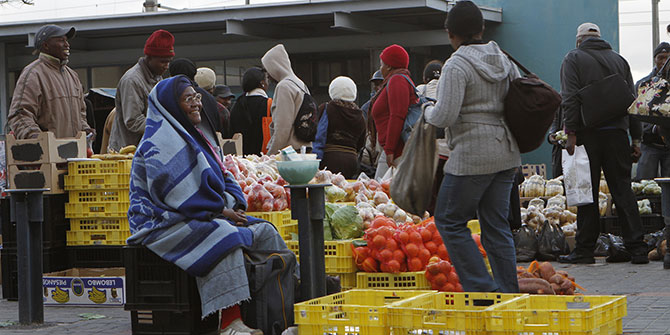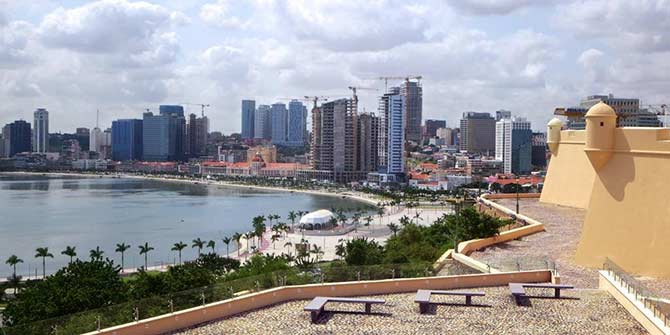Joseph Hanlon and Teresa Smart are unimpressed by a new initiative, but disappointingly avoid all the potential excruciating puns.
Bill Gates announced on 7 June that he is giving 100,000 chickens to the poor because chickens are “easy to take care of” and a woman with just five hens in Africa can make $1000 per year. For Mozambique where we work, this is remarkable – fewer than 2% of Mozambican farmers make $1000/year. What a wonderful idea. Why did no one think of this before?
Actually, they did. For a decade, Mozambique has had its district development loan fund, known locally at the “7 million” because the initial fund was Meticais 7 million per district. Most farm families have chickens running around, and one of the most common requests for loans from the fund is from people who agree with Gates that chickens are “easy” and they want to expand to commercial production. Nearly all fail, and cannot repay their initial loan. Perhaps the problem is not the initial five hens.

Ed Wethli, an old friend who worked with chickens in Mozambique, says Gates is half right. “Village chickens are the true ‘free-range’ chickens in that they wander around wherever they like with no boundaries, often roosting in trees at night. They find most of their own feed, are good at hatching and mothering young chicks and they have the ability to survive under harsh conditions.” They are an important part of local life, and are a valuable food source as well as being used as gifts and for ceremonies. And a few are sold to neighbours.
The problem is scaling up to commercial production, with larger flocks that no longer live in trees but require coops, feed, and treatments to prevent parasites and Newcastle disease. And they require markets. Small chicken growers in Mozambique usually fail because they cannot produce at a cost below those of the larger growers. In even remote local markets, frozen chickens produced in Mozambique or imported from Brazil and South Africa are cheaper than local live chickens. Local chickens taste better, but they are a luxury product. And margins are tight – to make a profit a farmer must be able to grow and sell the chicken in five weeks; if it takes just one extra week, then all the profit is lost to extra feed costs. With veterinary and other technical support, village chicken production can be made profitable, although more at the level of $100 per year rather than $1000. But in Mozambique, that kind of support is rarely available.
Over three decades, Brazil developed an entirely different model. With intensive support by the Brazilian development bank BNDES and tight regulation by the government, Brazil has become the second largest chicken producer in the world and the largest exporter. The chickens are raised by tens of thousands of family farmers, but on a contract basis to large companies which provide day-old-chicks, feed, medication, technical assistance and, most importantly, a guaranteed market.
There are two lessons here. First, this industry was not created by the private sector, but by long term intensive investment by the government – it is the state that builds capitalism. Second, small family farmers can be more effective than large producers, if they are integrated in a value chain.
Fifteen years ago most chickens on the market in Mozambique were imported, mainly from Brazil.
Neoliberalism was still in force and donors and lenders would not let the government intervene in agriculture. But two US NGOs, TechnoServe and Clusa (Cooperative League of the USA – many people do not realise that in the capitalist US, a majority of farmers are members of cooperatives), began work to build local chicken production and local soya growing to feed the chickens cheaply. By 2008 local chicken production exceeded imports. It took another four years of intensive, on the ground, work – cutting costs and losses and introducing more productive chicken breeds – to build the industry up to the point that the private sector was interested. Now the most effective producers follow the Brazilian out-grower model, with families rearing the chickens and a central company providing day-old-chicks, feed, medication and markets. Indeed, it was so successful that we called our most recent book Chickens and beer: A recipe for agricultural growth in Mozambique.
The best family farmers are now earning $750 per year, which in Mozambique is a lot of money. Unlike Bill Gates’ five hens or the families who try to expand with loans, these farmers receive hundreds of day-old-chicks, an effective support package, and are sure of being able to sell what they produce. And those chickens on the market are less costly than Brazilian imports, providing an inexpensive source of protein to local people.
But knowing what works is not useful, if it is “wrong” – in this case because it was neither charity (giving away hens) nor the private sector, but an intensive development effort by what might be called “the international public sector”. However, the international financial institutions are now stepping in to correct the situation. Odebrecht, the giant Brazilian construction company (whose boss was jailed for 19 years in March for corruption) has already received $550,000 from the Agriculture Fast Track Fund (set up by the US, Sweden and Denmark) and the Africa Development Bank to plan an $82 million installation to go from field to fork, producing maize and soy for feed; having a hatchery, slaughterhouse and processing plant; and marketing. It hopes to raise money from the World Bank’s International Finance Corporation and produce a quarter of Mozambique’s chickens. If successful, the project will put out of business thousands of Mozambican small commercial chicken producers, who could not compete. Is this really the best way for the World Bank and African Development Bank to promote development?
As usual, the aid industry can only see the two extremes and ideas that come from outside – Bill Gates’ five hens or Odebrecht’s millions of chickens. The successes in the middle, and the successes developed locally, are ignored. In Mozambique thousands of Mozambican farmers are already raising their income by producing good value chickens – but that does not grab headlines. So let us hand out hens instead.
P.S. The Bolivian government was also underwhelmed by the chicken offer.
This article was first published on Oxfam’s From Poverty to Power blog.
Joseph Hanlon is visiting senior fellow at the London School of Economics and visiting senior research fellow at the Open University.
Teresa Smart is a senior research associate at the Institute of Education, University College London.
The views expressed in this post are those of the author and in no way reflect those of the Africa at LSE blog or the London School of Economics and Political Science.






100,000 Chickens is actually nice trial. Giving chickens to the poor will benefit at least 25 percent of them, this will better do with some basic trainings. After all people will discover new ways to tackle the competitive costs.
The idea is not bad but one has to keep in mind the actual purpose of giving chickens. Just giving 5 birds can in no way help improving financial status of a poor household. Yes this number can be helpful in improving nutrition status of a poor household. If we opt for commercial aspects then we must increase the number of birds and at the same time link them both backward and forward for successful implementation of the activity.
Yes, smallish contract growers do make some money and do not have to worry about getting chicks, feed technical assistance and marketing. But, most of the profit comes from the marketing side so wouldn’t it be better for governments to assist chicken farmers with these inputs including providing markets (e.g., hospitals, schools, military barracks) so that the smaller farmers can make more of the profit instead of the big monopoly farming corporation?